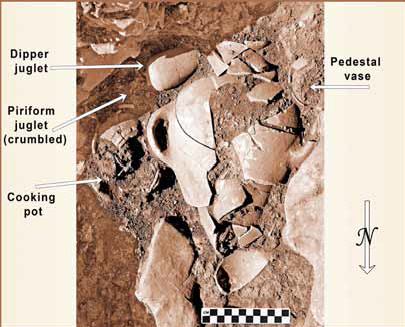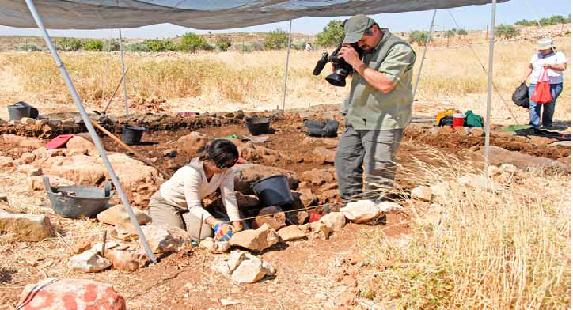ABR’s 2009 Excavation At Khirbet El-Maqatir: The Infant Jar Burial -- By: Bryant G. Wood
Journal: Bible and Spade (Second Run)
Volume: BSPADE 25:2 (Spring 2012)
Article: ABR’s 2009 Excavation At Khirbet El-Maqatir: The Infant Jar Burial
Author: Bryant G. Wood
BSpade 25:2 (Spring 2012) p. 37
ABR’s 2009 Excavation At Khirbet El-Maqatir: The Infant Jar Burial
Infant jar burials beneath the floors of domestic houses are a relatively common find at archaeological sites in Israel. They are mostly from the Middle Bronze period (ca. 1750–1500 BC), less common in Late Bronze I (ca. 1500–1400 BC) and unknown in Late Bronze II (ca. 1400–1200 BC). The infant jar burial excavated by the ABR team during the 2009 season at Kh. el-Maqatir, although similar to other known examples, is unique in that Kh. el-Maqatir is a fortress and not an urban center.
Location Of The Burial
As can be seen in the plan below, the burial was found beneath a building located just inside the entrance gateway of the Later Bronze I fortress. In the Bronze and Iron Ages, important administrative structures were located near the city gate (see pp. 39–43). The burial indicates that the building inside the gate at Kh. el-Maqatir was not only an administrative center, but also a place where people lived. This suggests that the building was the “Commandant’s House,” which served both as the living quarters for the fortress commander and the administrative center for the fortress. Since the evidence we have gathered at Kh. el-Maqatir strongly suggests that this is the site of Joshua’s Ai (Jos 7–8; Wood 2009), it is logical to conclude that the building was the residence of the king of Ai, who features prominently in the narrative of Joshua 8.

Bryant G. Wood
Entrance gateway and building remains of the Late Bronze I fortress at Kh. el-Maqatir.

Michael Luddeni
Infant jar burial found at Kh. el-Maqatir in 2009 in the northeast corner of Square O18, view south.
Nature Of The Burial
The jar burial was placed on bedrock, just 15 inches below the present-day surface. An opening had been cut into the bottom of a small storage jar and the remains of the deceased infant placed inside. Several memorial vessels, perhaps originally containing offerings, were carefully placed around the outside of the storage jar. All of the vessels, including the storage jar, were found to be empty. How, then, do we know that it was an infant burial?
Scattered about the storage jar were the bones of a perinatal infant, as identified by physical anthropologists at Hebrew University in Jerusalem.
BSpade 25:2 (Spring 2012) p. 38

Click here to subscribe
